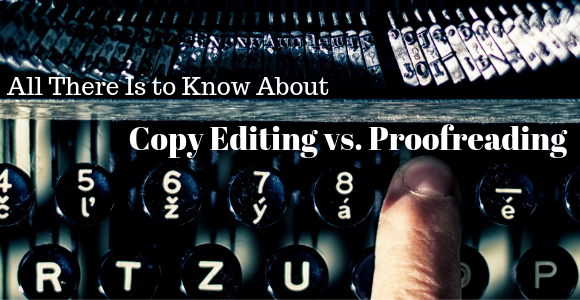If you didn’t know by now, I will remind you that every piece of content that you put on your website should be copy edited and/or proofread by your web content writers. This is important not just for the sake of your website, but also because poor grammar and spelling mistakes – which you can catch once you edit and proofread – can affect your page rankings. Writers generally rely on someone else or in other words, a fresh pair of eyes, to look over their content. There are various copy editors, proofreaders, and quality assurance professionals that can help – here is what you need to know about the process.
What Is Copy Editing?
Generally what you start with
Have you heard of a “rough draft” before? When I was in middle school and high school, all of my writing assignments – whether it be essays or research papers – required a rough draft to be handed in before the final. This draft was then revised and returned with any corrections that needed to be made (if you choose to do them) for the final assignment. Ideally, my teachers at the time were copy editing my work.
On a more general level, copy editing involves reviewing the material and checking for any grammatical errors, typos in the spelling, ensuring the style is correct, along with all punctuation. These editors can also rewrite some parts of the content if needed in order to make sure certain phrases or paragraphs sound better. For instance, adding transition sentences, fixing wordiness, improving the language that is being used, and more. Since I was taking these classes to learn how to write properly, I just got the occasional notes with questions like “Do you think this sounds okay the way it is written?” or “Can you elaborate on this point?” – instead of my teacher (copyeditor) doing the rewrite.
Ideally, your web content writers should have the text edited in a document so any changes can be made right in the text. They check facts, citations, references, clarity, grammar, and edit when needed.
What Is Proofreading?
An almost finished product
We all usually do this part – proofreading a text, a tweet, a Facebook post, etc. – right before it is sent off. Why have we made it a habit? Because at the end of the day we are all humans and we all make mistakes. You may have missed something, maybe you were rushing, sleepy, who knows? A second look can NEVER hurt, in this case. In fact, proofreading can actually improve your writing!
When you have almost finished your content – it has been edited, designed, and everything in between – a proofreader can then go over it and spot any errors that may be left. The “proof” in proofreading comes from the fact that most readers use a copy of the text or in this case, a proof, when reading over the content.
In this stage, there typically shouldn’t be any changes that are made. The readers double check that the web content writers have included the right font and type size throughout, that the picture captions match up to the image, and more. The proofreader is simply looking for small errors within the text or format before confirming that it is ready to be uploaded/published. This is the key thing here: they make sure it is ready to be seen by the public.
Which Should You Be Using?
Some advice from my point of view
While both proofreading and copy editing are useful and should be used, the most important one is that final look. While copy editing is a more in-depth revision, proofreading can help you spot the errors just in time, and it still covers the bases of the editors – just in a broader sense. They continue to pay attention to the consistency of the content, spelling, punctuation, capitalization, along with other errors that may be present.
When people utilize the strategy of fast writing, they may need to proofread over their work in order to ensure only what they WANT to include is there – since they are getting everything out on paper (or in a document) as it comes to them. Think of proofreading as the icing on the cake or the last piece of the puzzle. It is what you need in order to reveal your masterpiece. Some may even consider it the most important part of it all.
Conclusion
No matter how long you have been writing, how well you know the topic, or how fast you can type on a keyboard without making mistakes, editing the content that you create is important. Mistakes can occur anywhere within – whether it is in the text itself or in the size of the font. A proofreader can help you ensure that you or your web content writers have completed their job and that the creation is ready to be published. I hope you got the gist of how copy editing and proofreading differ; let me know how you edit or proofread your work!








